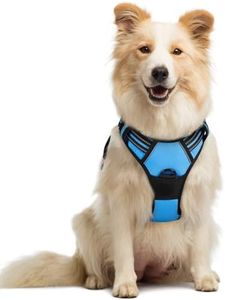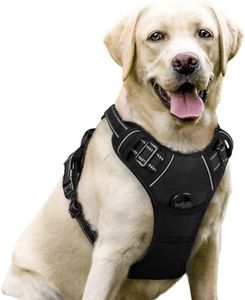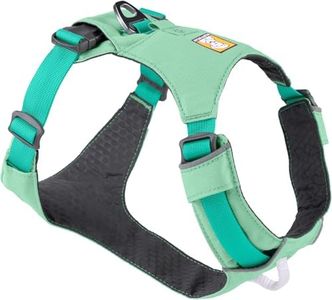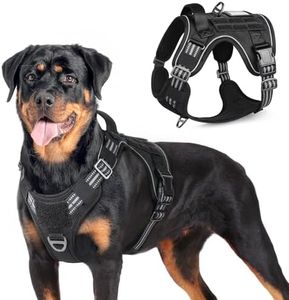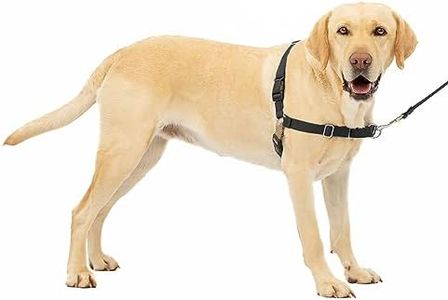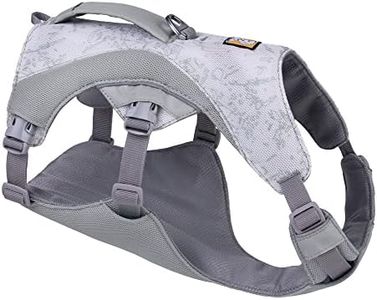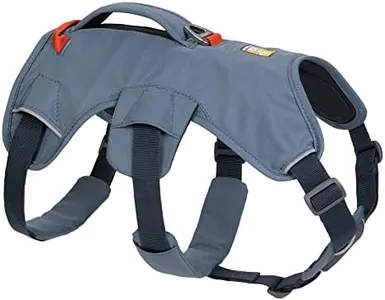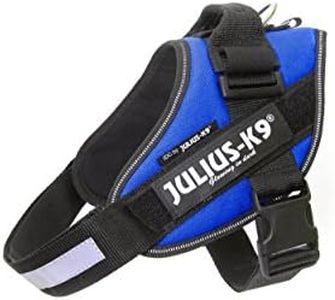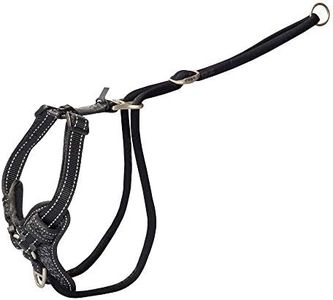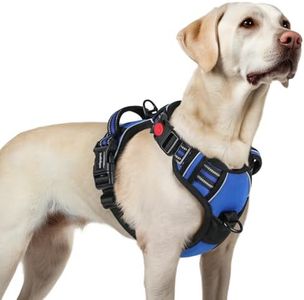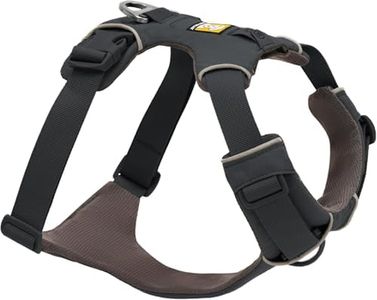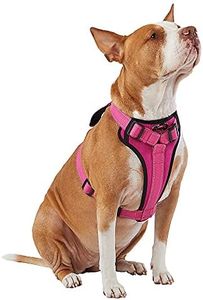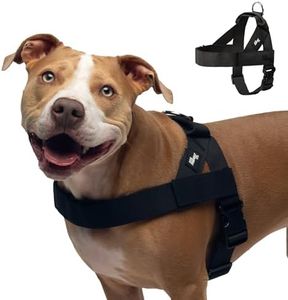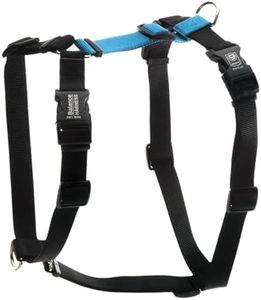We Use CookiesWe use cookies to enhance the security, performance,
functionality and for analytical and promotional activities. By continuing to browse this site you
are agreeing to our privacy policy
10 Best Boxer Dog Harness
From leading brands and best sellers available on the web.Buying Guide for the Best Boxer Dog Harness
Choosing the right harness for your Boxer is important for their comfort, safety, and your control during walks or outings. Boxer dogs are strong, energetic, and often quite muscular, so a harness designed for their build can help prevent injuries, discourage pulling, and avoid strain to their neck and spine. Take time to consider how active your Boxer is, how much control you need over them, and any special needs they might have, such as sensitive skin or escape artist tendencies. By understanding the key features of dog harnesses, you'll be better equipped to find the best fit for your furry friend.Harness TypeHarnesses typically come in several styles: step-in, overhead, front-clip, back-clip, or dual-clip. This refers to how the harness fits onto your dog and where the leash attaches. A front-clip harness can discourage pulling as it steers your dog toward you, while a back-clip is great for well-behaved walkers. Step-in and overhead designs describe how you put the harness on your dog; some dogs are more comfortable with one style over the other. Think about your Boxer's walking habits and temperament to pick the style that will work best for you both.
Size and FitGetting the right size and fit is crucial for safety and comfort. Measure your Boxer's girth (the widest part of their chest) and sometimes their neck before picking a harness. Harnesses are usually labeled with size ranges—small, medium, large—often with inch or centimeter measurements. Boxers commonly fit in the medium to large category, but measuring your dog is the only way to be sure. Look for adjustable straps so you can fine-tune the fit, making sure it's snug but not too tight—a general rule is you should be able to fit two fingers under the harness.
Material and PaddingHarnesses can be made from materials like nylon, polyester, leather, or mesh, and some include extra padding. Material choice affects durability, breathability, and comfort. For active, strong dogs like Boxers, sturdy materials with reinforced stitching are a good choice. Padding can help prevent chafing, especially for short-haired dogs with sensitive skin. Choose materials that seem comfortable for longer wear, especially if your Boxer joins you for runs or hikes.
AdjustabilityMost harnesses feature one or more adjustable points so you can tailor the fit to your dog's unique body shape. The more points of adjustment, the better the chance you’ll achieve a secure yet comfortable fit. Boxers’ deep chests and muscular necks can make fit tricky, so harnesses that adjust at both neck and chest are useful. Choose a harness with enough adjustability so it won't slip off or chafe, particularly if your Boxer is still growing or changes weight.
Ease of Putting OnSome harnesses slip over the head while others require your dog to step inside. The ease of use often depends on your dog’s temperament and your own preferences. For excitable or sensitive dogs, quick-release buckles and simple designs can make walks less stressful for everyone. If your Boxer is impatient or fidgety, look for a harness that can be put on quickly and without a struggle.
Safety FeaturesSafety features like reflective strips, secure buckles, and strong D-rings for leash attachment can make the harness safer for early morning or nighttime walks as well as durable enough for active dogs. Reflective elements are especially important if you walk your Boxer in low light, while strong fastenings keep even powerful dogs securely attached. Consider your typical walking environment and whether extra safety elements would be beneficial.
No-Pull DesignSome harnesses are specifically designed to discourage pulling by redirecting your dog's movement toward you when they pull. This can be helpful for strong dogs like Boxers that get excited on walks. If your Boxer tends to pull, look for a harness that offers a front-clip or no-pull mechanism. If your dog already walks nicely on a leash, this feature may be less important.
